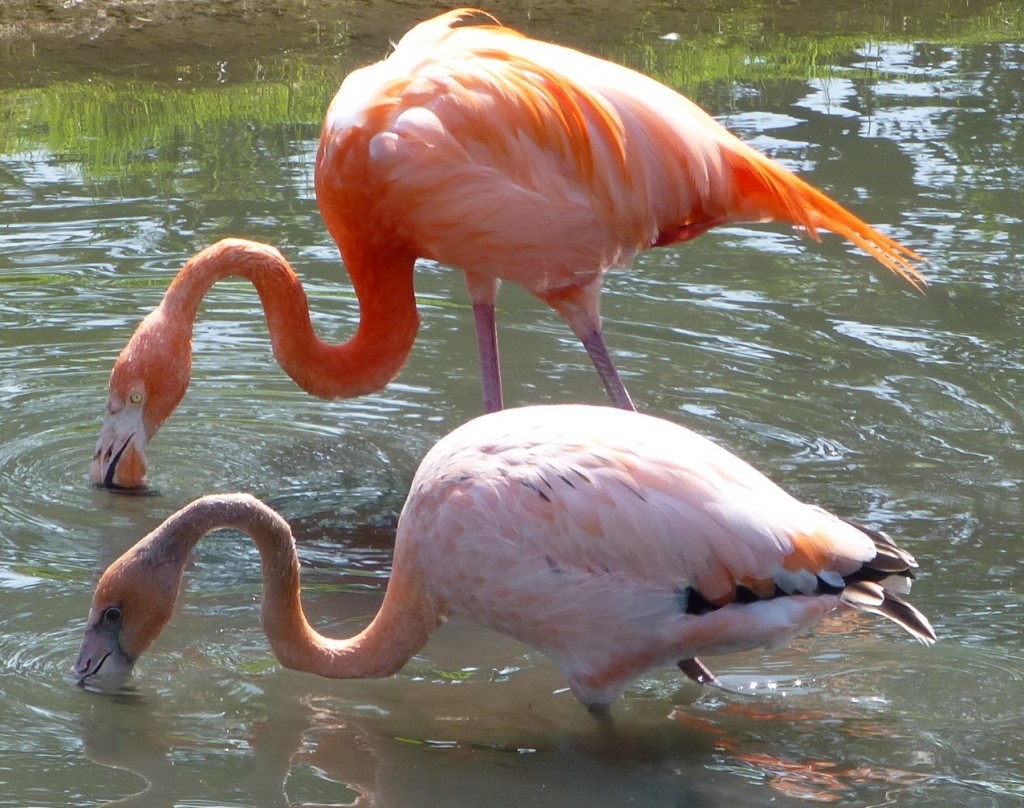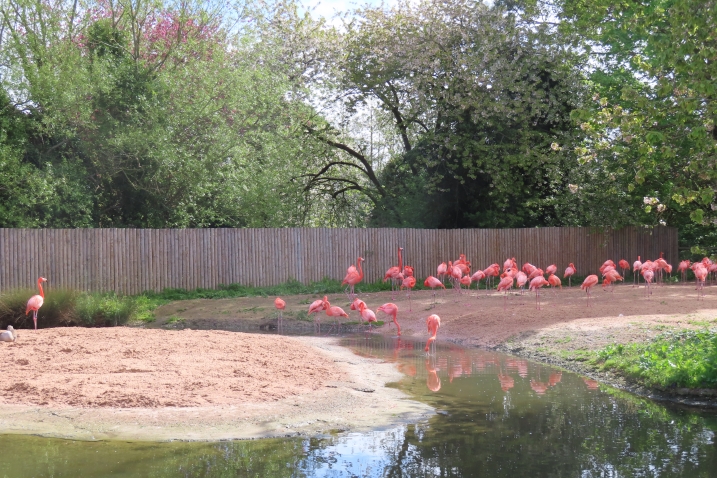When is the flamingo's tail not the flamingo's tail?
You may have noticed that flamingos appear to have a rather long, floppy tail that, like the rest of their plumage, is exaggerated and flouncy. However if you take a closer look and wait until a flamingo opens its wings, you will see that the what looks like the flamingo's tail feathers are actually attached to its wings.
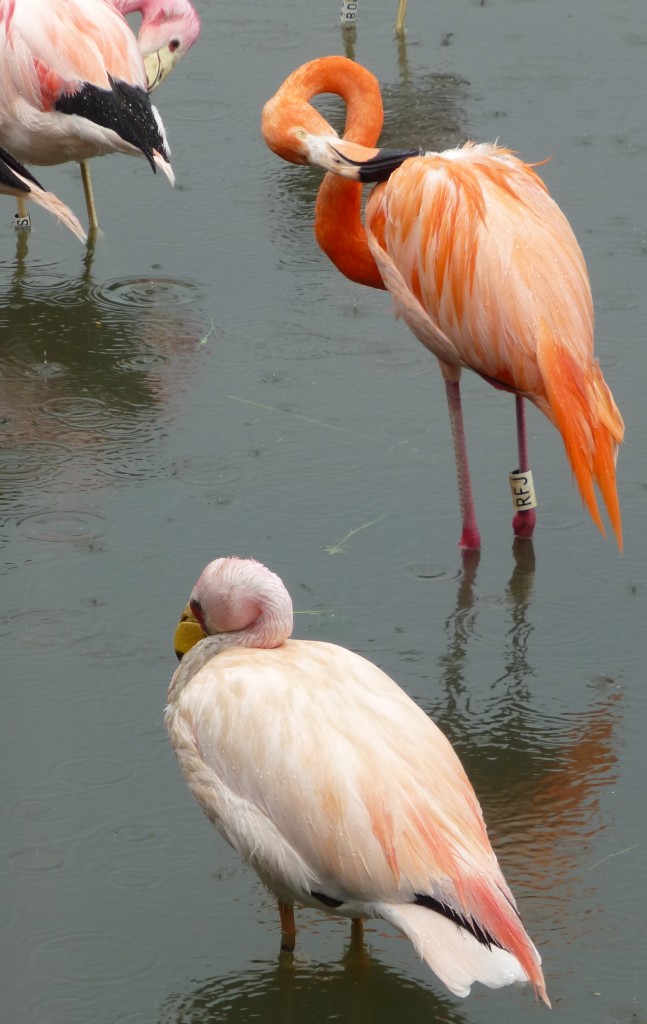
As strange as this sounds, flamingos have elongated feathers that grow at the base of their wings. These feathers have the biological name of tertial feathers and they have a protective function. In most species of birds, the tertial feathers are not directly involved in helping the bird fly, even though they are attached to the wing, but they cover over the primary and secondary feathers (a bird's main flight feathers) when its wings are folded. This keeps the flight feathers neatly in place and protected from the worst of the weather or from being over-ruffled, as this could impede a bird's ability to fly.
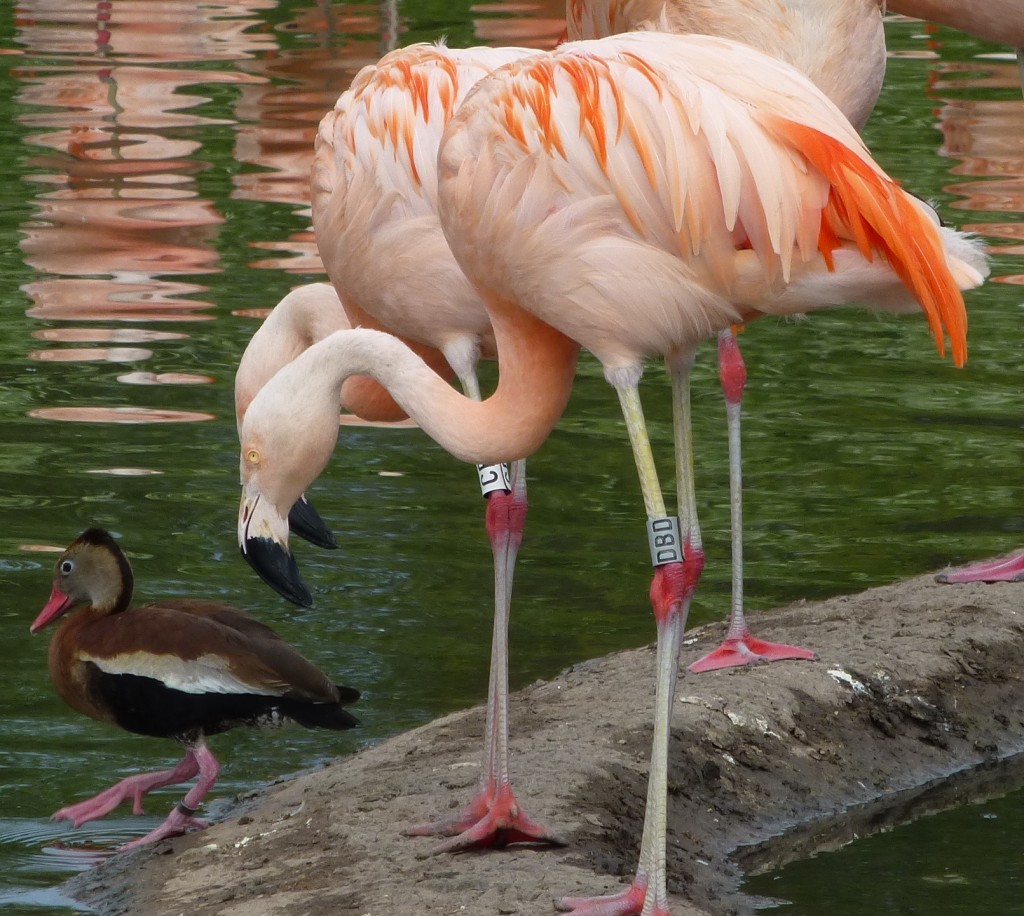
As flamingos are all about show, they have developed these brightly coloured tertial feathers as another part of their courtship display. All of the six species of flamingo have black primary feathers and for most of the time these are hidden as the wings are folded. So all that can be seen are their pink body feathers. But when the birds perform their courtship display they quickly and suddenly flash open their wings to reveal a shock of black to contrast with the other colours that they carry. You can see the effect of this in the photo below of a group of displaying Caribbean flamingos, and how the long tertial feathers are lifted out with their wings.
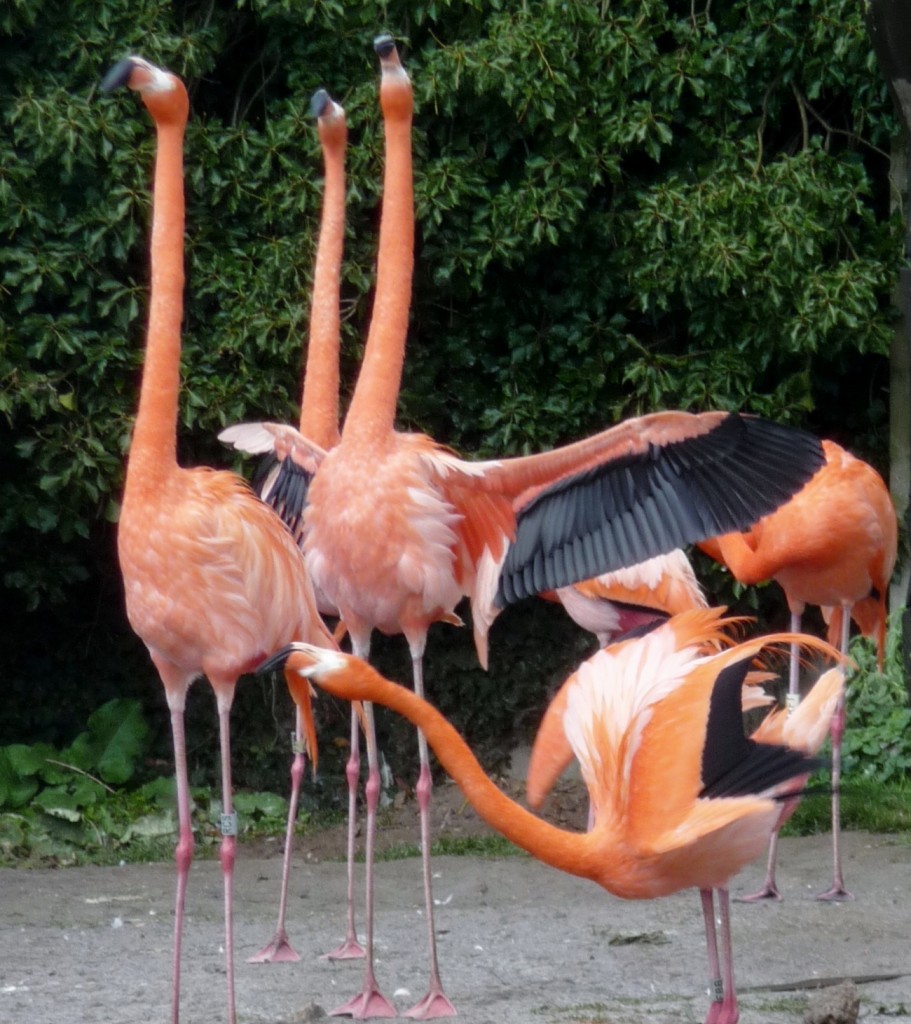 So in reality, the flamingo's tail is short and stubby. Tail feathers are strong and thick, growing in a similar fashion to flight feathers. Flamingos do not need a big, fancy tail as they are not built for highly manoeuvrable flight. They only fly when they need to, and this is not that often if they can help it! As a flamingo grows up and develops its mature, breeding plumage, the tertial feathers get longer and longer until they eventually can be seen protruding over the end of the tail. The photo below shows this change from "ugly duckling" to "beautiful swan" nicely over the generations; a very young bird not yet in full adult dress next to a grand old man, as pink as pink can be.
So in reality, the flamingo's tail is short and stubby. Tail feathers are strong and thick, growing in a similar fashion to flight feathers. Flamingos do not need a big, fancy tail as they are not built for highly manoeuvrable flight. They only fly when they need to, and this is not that often if they can help it! As a flamingo grows up and develops its mature, breeding plumage, the tertial feathers get longer and longer until they eventually can be seen protruding over the end of the tail. The photo below shows this change from "ugly duckling" to "beautiful swan" nicely over the generations; a very young bird not yet in full adult dress next to a grand old man, as pink as pink can be.
